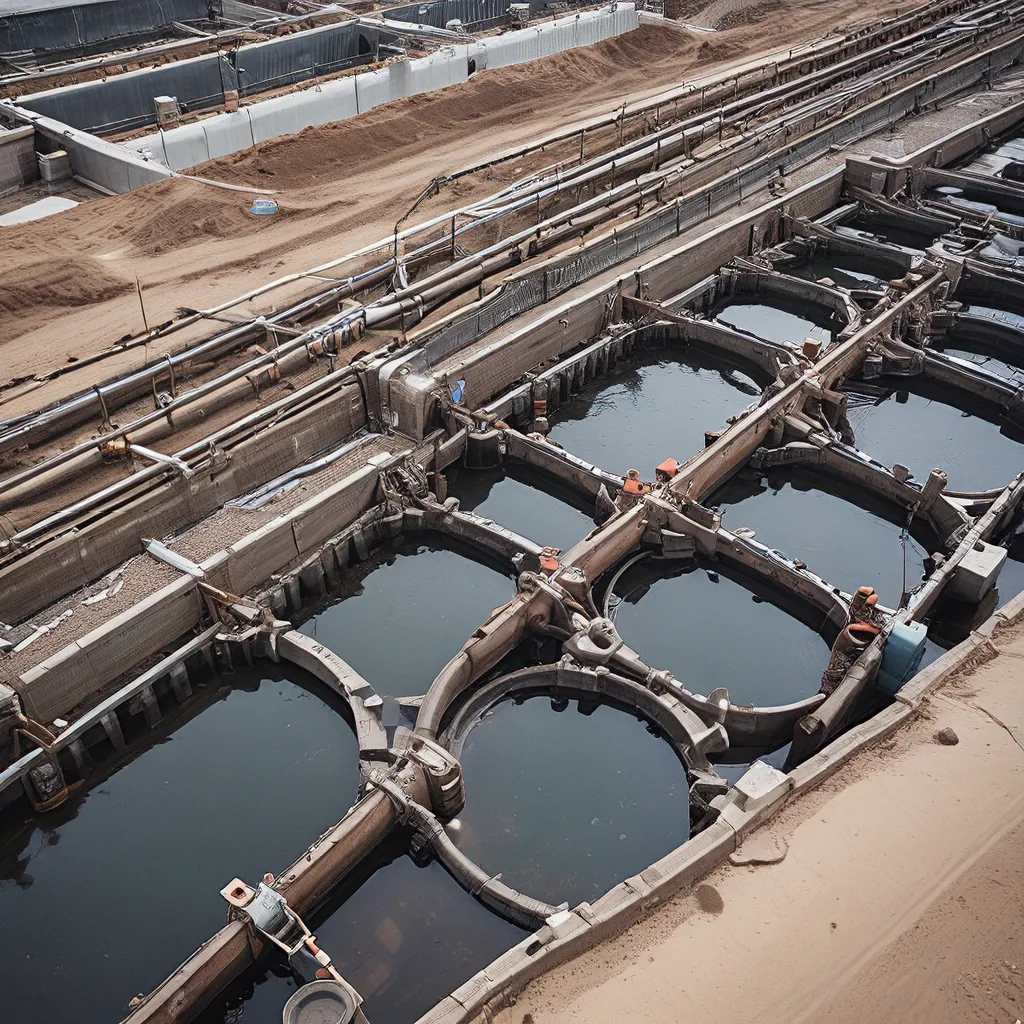
As we navigate the complex world of wastewater treatment, it’s become increasingly clear that a collaborative approach is the key to unlocking a more sustainable future. Gone are the days of siloed, centralized systems – today, we’re embracing the power of the sharing economy to revolutionize how we manage our precious water resources.
Tapping into the Circular Potential
At the heart of this transformation lies the concept of the circular economy. Instead of the traditional linear model of “take, make, waste,” we’re now striving for a closed-loop system where resources are continuously reused and repurposed. And when it comes to wastewater treatment, the circular economy presents a wealth of untapped opportunities.
One of the most exciting aspects of this shift is the growing recognition that wastewater is not just a problem to be solved, but a valuable resource to be harnessed. Nutrients, energy, and even clean water itself can all be extracted and reused through innovative treatment processes. This not only reduces our environmental impact, but also creates new revenue streams and economic opportunities.
As the 2024 Regional Water Dialogues highlighted, incorporating circular economy principles into the drinking water and sanitation sector is crucial for making significant progress towards achieving Sustainable Development Goal 6 – ensuring the availability and sustainable management of water and sanitation for all. This underscores the belief that these innovative, collaborative approaches are essential for improving the efficiency and sustainability of water resource management.
Collaborative Partnerships for a Shared Future
But achieving this vision of a circular wastewater economy doesn’t happen in a vacuum. It requires a collective effort, bringing together a diverse range of stakeholders – from government agencies and private businesses to community organizations and academic institutions.
As Lifeng Li, Director of the Land and Water Division at the Food and Agriculture Organization of the United Nations, so eloquently stated, “Water scarcity, the climate crisis, and global food security – these are all interconnected challenges that call for collaborative action.” And this sentiment couldn’t be more true when it comes to the world of wastewater treatment.
By fostering strategic partnerships and collaborative resource management, we can tap into a wealth of knowledge, expertise, and resources that would otherwise remain siloed and underutilized. Imagine a world where wastewater treatment plants work hand-in-hand with renewable energy providers, agricultural producers, and local communities to create a truly integrated, symbiotic system.
Overcoming Barriers to Circularity
Of course, transitioning to a more circular, collaborative approach to wastewater management is not without its challenges. As the Regional Water Dialogues revealed, the main barriers to implementing circular economy projects for drinking water and sanitation include a lack of political will and weak governance or limited regulatory frameworks.
But these are not insurmountable obstacles. By working together, we can overcome them and unlock the true potential of the sharing economy in the wastewater treatment sector. Strong, forward-thinking policies and regulations are crucial, as are investments in innovation and infrastructure that enable the adoption of circular technologies and practices.
The Power of Collaboration in Action
At Alpha Wastewater, we’ve witnessed firsthand the transformative power of collaborative resource management. By forging partnerships with local authorities, renewable energy providers, and agricultural producers, we’ve been able to implement innovative treatment processes that extract valuable nutrients and generate renewable energy from wastewater.
For example, in one of our projects, we’ve collaborated with a nearby farm to establish a nutrient recovery system that diverts nutrient-rich wastewater from the treatment plant and uses it to fertilize crops. This not only reduces the burden on the wastewater treatment system, but also creates a sustainable, closed-loop cycle of resource utilization.
But the benefits of this collaborative approach extend far beyond the confines of the wastewater treatment plant. By engaging with the local community and fostering a sense of shared responsibility, we’ve been able to increase awareness and foster a culture of water stewardship – a crucial component of a thriving, sustainable future.
The Future of Wastewater Treatment: A Shared Vision
As we look to the future, it’s clear that the path to sustainable wastewater management lies in embracing the principles of the sharing economy. By breaking down silos, forging cross-sector partnerships, and harnessing the power of collaborative resource management, we can unlock a future where wastewater is no longer a liability, but a valuable asset in the fight for a more sustainable, equitable world.
So, let’s raise a glass (or a beaker, as the case may be) to the power of collaboration. Because when we work together – combining our knowledge, resources, and creativity – there’s no limit to what we can achieve in the realm of wastewater treatment and beyond.